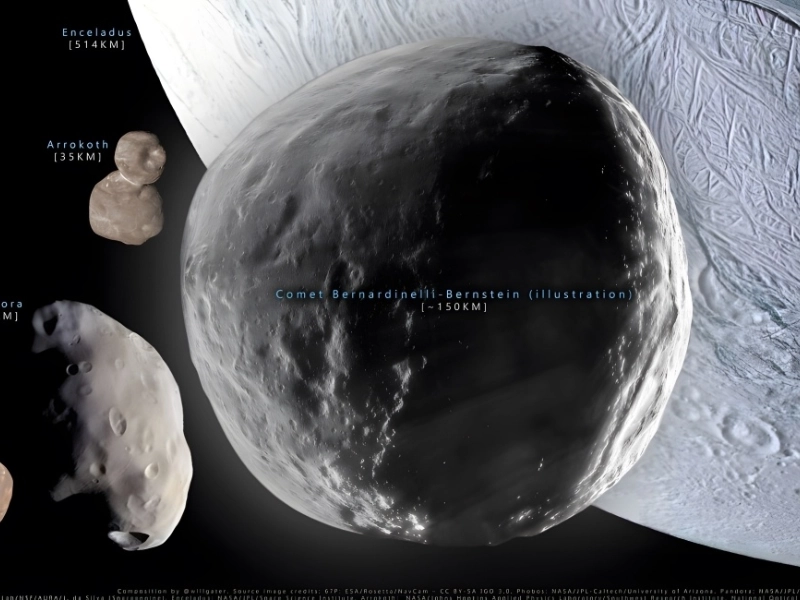Discovery: Comet Bernardinelli-Bernstein (C/2014 UN271) Found Year: 2014 Discoverers: Gary Bernstein and Pedro Bernardinelli Location: Oort Cloud Astronomers Pedro Bernardinelli and Gary Bernstein identified the sizable Comet Bernardinelli-Bernstein (C/2014 UN271) using archival footage from The Dark Energy Survey. The comet was initially photographed in October 2014 when it was approximately 2.7 billion miles from the Sun.
Key Characteristics: Oort Cloud Origin: This comet is believed to originate from the Oort Cloud, a distant region of our solar system filled with icy bodies. Size: Comet Bernardinelli-Bernstein is notable for its large size, making it one of the most significant comets discovered in recent years. Significance The discovery of Comet Bernardinelli-Bernstein provides valuable insights into the composition and behavior of comets, as well as the dynamics of the Oort Cloud.
Conclusion The study of Comet Bernardinelli-Bernstein enhances our understanding of the early solar system and the formation of comets, contributing to the broader field of astrophysics and planetary science.

Discovery: Comet Bernardinelli-Bernstein (C/2014 UN271) Credit: Twitter/willgater/Bernstein The Bernardinelli-Bernstein comet is recognized as the largest known Oort Cloud comet, featuring a nucleus with a diameter of at least 75 miles.
Key Predictions: Upcoming Passage: The comet is expected to pass just outside Saturn's orbit in January 2031. Visibility: Despite its size, it will not enter the inner Solar System, meaning it will not be visible to the unaided eye. Significance The size and trajectory of Comet Bernardinelli-Bernstein provide important data for understanding the characteristics of Oort Cloud comets and their potential interactions within the Solar System.
Conclusion Comet Bernardinelli-Bernstein stands out not only for its impressive size but also for the insights it offers into the dynamics of comets and the structure of our Solar System.